Project Credo How-To: Collaborative Research
Primary research is the foundation of scientific information. Around 1.5 million research papers are written annually but finding, understanding, and sharing them remains challenging. Project Credo's mission is to build a evidence based consensus on a wide range of topics and openly sharing it with the public. This is a quickstart guide on how to use the site.
Create a Board
Project Credo lets anyone curate their own board of research, making it easy for viewers to navigate to, talk about, and understand primary research within the context of a topic or question. By creating your own board, you can add to our repository of evidence and broaden the fields people can examine through the lens of research.
Boards can be any topic that can be researched through the scientific process ranging from medicine to health, psychology, social policy, economics, computer science, and mathematics. If there's a journal for it, it's a fit for our site.
You don't need to limit yourself to questions either. Some example non-question board names could be "Studies on Welfare in America," "Exercise and Depression, or even broader like "Papers I've published" or "Interesting papers." They're your boards. Be as flexible as you like.
New Board
Start a new board for any topic you don't see or you would like to curate personally. Boards represent a collection of primary research papers by an individual or collaboratively by a group or public. A Project Credo board is shared with everyone so viewers have a window into the best research for a topic. Whether you are an expert or are looking for help in finding papers, a board will help you get there.
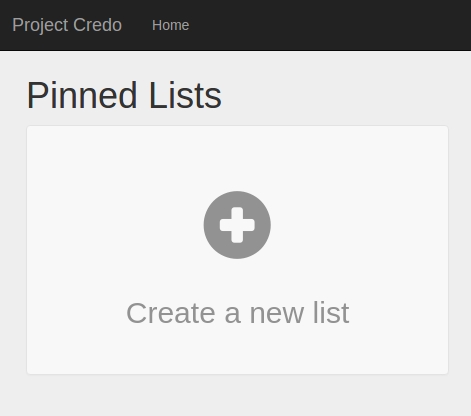
Name and Description
A good name and description will give all viewers and collaborators the context for the kind of papers you want in your board. Some attributes you want your audience to consider are geography, methodology, recency, and any sample requirements like gender or age.
Tags on the board can provide a quick glance of additional keywords or attributes you're looking for.

Collaborators
A public board allows any member of the Project Credo community to add papers to this board. A collaborators only board allows only users you've selected to add papers to your board. You maintain ownership of your board while any added collaborators can:
- Add and remove papers to your collaborators only board
- Edit board details like name, description, or tags
- Add and remove other collaborators or remove themselves as collaborators
- Help moderate comments

Add Papers to a Board
Our mission at Project Credo is to connect and guide people to the origins of empirical evidence, or Primary Research and Sources. A good Project Credo board will primarily cite primary sources and may include secondary sources like reviews of literature, systematic reviews, and meta-analyses. However, we avoid reporting and opinionated articles like news articles or blog entries in favor of primary sources. This helps get people as close to original source of data as possible.
Finding the best papers is the primary function of a board and we offer a few methods like searching through Crossref's library through our searchbar, adding by a DOI, by a Pubmed ID, or by URL. Project Credo sources bibliographic data from Crossref and Pubmed and will look to meld incoming data wherever possible.
Search
The easiest way to find a paper is to search by keywords, a paper's title, author name, or journal. This searches Crossref's library of papers.
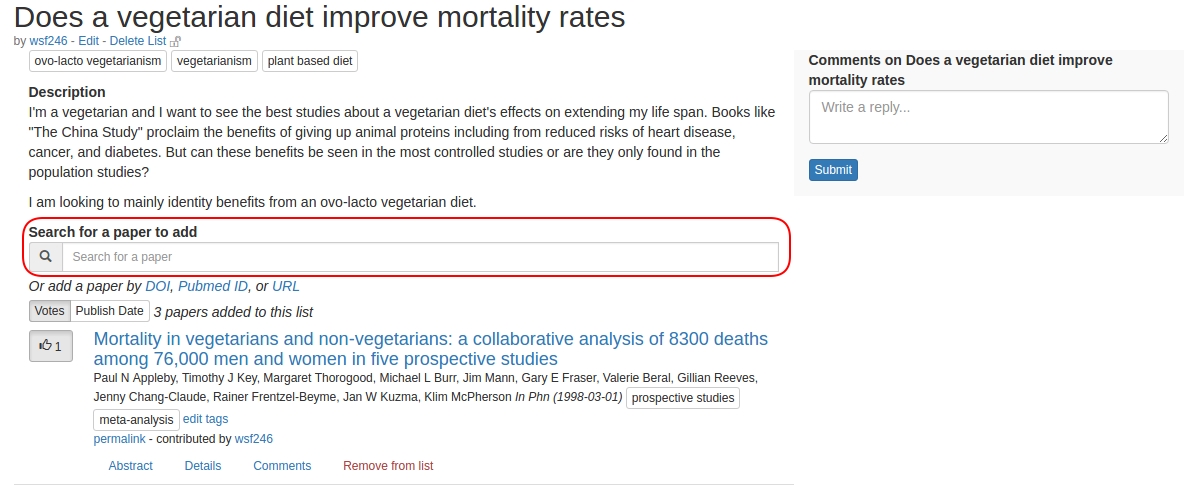
Click the paper you want to add.
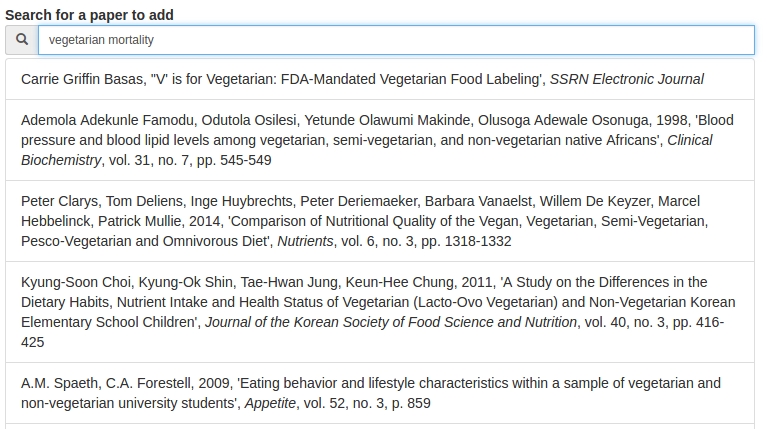
DOI
Digital object identifiers (DOIs) are a persistent identifier for electronic documents and used by many publishers to link a journal article to its location on the web. DOIs will begin with "10." followed by a 4 digit identifier for the publishing body. Pro-tip: you can use "https://dx.doi.org/" + DOI to find any DOI paper.
Examples of DOIs include:
- 10.1371/journal.pone.0066981
- 10.1002/j.2326-1951.1969.tb02534.x
- 10.1163/193724086x00217
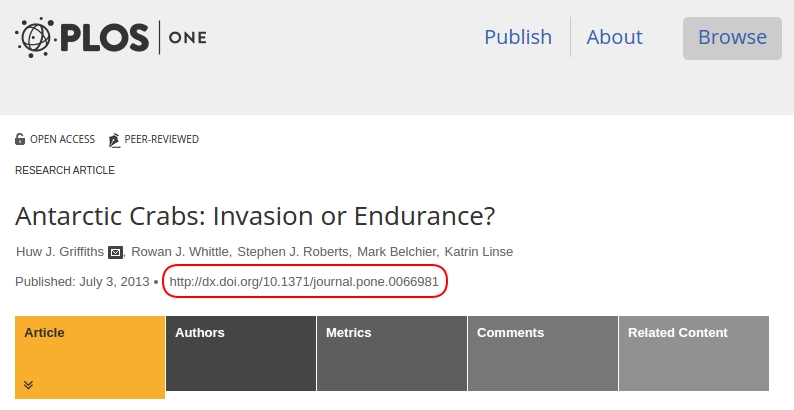
Pubmed ID
Pubmed IDs or PMIDs are a simple string of numbers and ties to Pubmed's database of articles.
Examples of Pubmed IDs include:
- 27896477
- 27977802
- 27974576

URL
If you can't find a paper through search, DOI, or Pubmed ID you can add a paper by its URL and title. This should be a last resort option as we cannot validate the bibliographic data at this point. Project Credo will only accept a URL at a proper http or https address.


Additional Paper Data
You can add missing details for a paper such as the abstract, links, and tags.
Abstract

Links
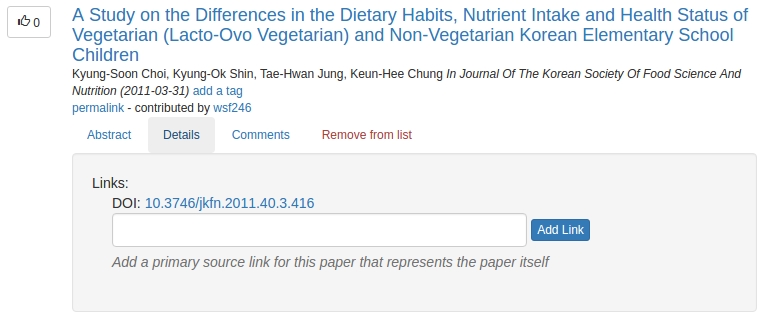
Tags

Remove a Paper
Removing a paper is as simple as clicking the "Remove from board" button. Only owners of boards, collaborators, or the original poster of the paper can remove a paper from a board.

Additional Context - Comment, Vote, and Share
Filling a board with papers is just the beginning. On Project Credo, adding additional context is a collaborative exercise.
Comment
Commenting on papers provides details that aren't easily discernible from the abstract. Good paper comments should shed light on the intent of the paper and point out any interesting findings or biases in the methodology
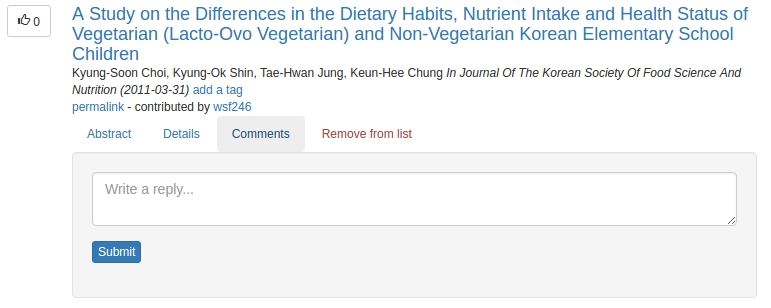
You can also comment on a board which provides context on how papers fit in the larger conversation of the topic. Good board comments show where papers fit within the scientific lifecycle and within the discussion.

Vote
Voting for a paper or comment helps show viewers what's important. Upvote the best papers within the context of a board. Help others identify the most valuable comments.

Share
Sharing your board or other people's board is easy and helps Project Credo spread the message of primary research. Share the link on Facebook, Twitter, or any other social media platform.

Get Started!
Now that you know how to help build our scientific commons, let's jump into it! Go to our homepage and see what people have already created or sign-in/sign-up and